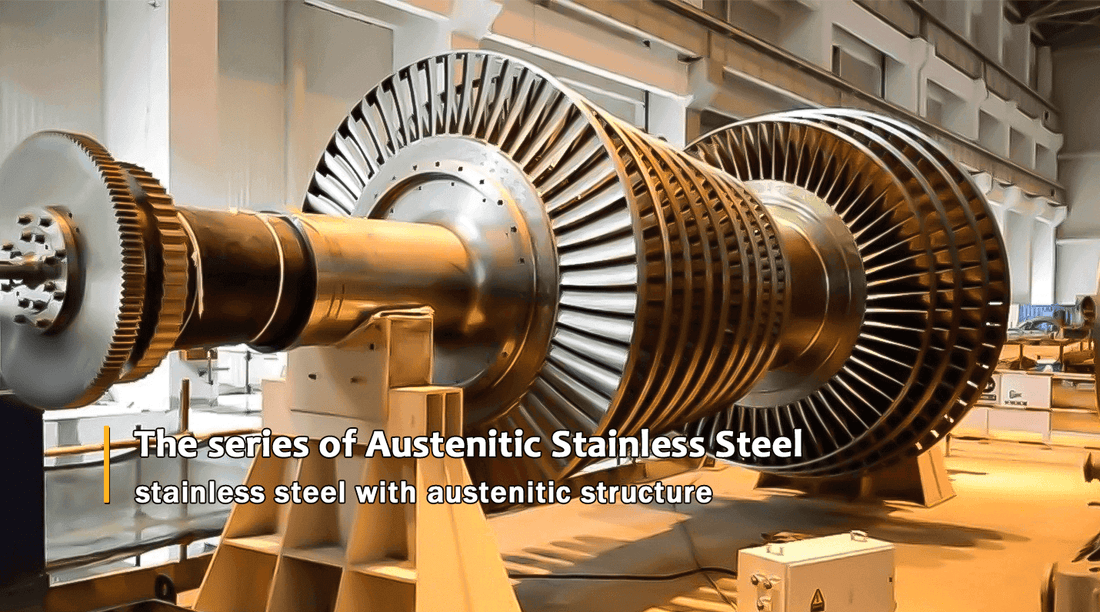Austenitic stainless steel is a kind of stainless steel with austenitic structure at normal temperature. When the content of C in austenitic stainless steel is 0.1%, the content of Cr is 18%, and the content of Ni is between 8% and 10%, the austenitic stainless steel can obtain stable austenitic structure. According to its structural characteristics, austenitic stainless steel can be divided into three categories: ferritic stainless steel, martensitic stainless steel and austenitic stainless steel.
Features and application:
The main component of austenitic stainless steel is chromium (Cr), whose content is generally between 6% and 18%. Therefore, austenitic stainless steel is also called "chromium stainless steel". In addition, chromium can improve the corrosion resistance of the matrix. The corrosion resistance of austenitic stainless steel is also related to nickel content, so its corrosion resistance also depends on nickel content and grain size. With the increase of nickel content, the pitting corrosion resistance and high temperature creep resistance are also improved. Austenitic stainless steel will not undergo stress corrosion cracking at room temperature, but when contacting with pitting medium in some medium, pitting or cracking will occur due to stress corrosion cracking or local stress increase caused by stress corrosion.
Austenitic stainless steel has higher strength and plasticity, but lower hardness and wear resistance, while austenitic stainless steel with higher carbon content has higher hardness and wear resistance, and higher strength and plasticity.
In the steel industry, austenitic stainless steel is a widely used high-strength material, which is mainly used for manufacturing boilers, steam turbines, industrial boilers, gas turbine compressor blades, burner blades, etc. Among them, austenitic stainless steel is the most widely used material in the manufacture of ultra-low temperature valves. Ultra-low temperature valve needs to work in extremely complex and harsh environment, so there are often many special requirements on material selection.
- Pressure vessels. Austenitic stainless steel has obvious advantages. It is widely used in the manufacture of pressure vessels, and can also be used in the manufacture of vessels, pumps and other pressure vessels, and can be welded under pressure; It can resist corrosion in acid, alkali and salt media, and can be processed into plates of various thicknesses, which are used for mechanical structural parts; It has good corrosion resistance in reducing medium.
- Chemical equipment. Austenitic stainless steel has good corrosion resistance and high strength, and is often used in the manufacture of heat exchangers, containers and other equipment in petrochemical industry. For those with special requirements for temperature and pressure, austenitic stainless steel is the best choice. For example, when the temperature reaches 300 ℃~450 ℃ and the pressure is within the range of 0.5 MPa~8 MPa, austenitic stainless steel must be used, because only austenitic stainless steel meets the requirements. In addition, the reactor (tower), reactor and other equipment in petrochemical industry can only be made of austenitic stainless steel. In the production of chemical equipment, it needs to be carried out under the conditions of high temperature and high pressure, containing corrosive gases. There are high requirements for the corrosion resistance of materials. Among many common materials, the stress corrosion cracking resistance of austenitic stainless steel is the best.

- Energy equipment. Steam turbines, boilers and other equipment using high temperature and high pressure medium in energy equipment need to be corrosion resistant, usually made of austenitic stainless steel.
 Tel:+86-21-67890007
Tel:+86-21-67890007
 E-mail:inquiry@ninesteel-cs.com
E-mail:inquiry@ninesteel-cs.com
 Inquiry Now
Inquiry Now


